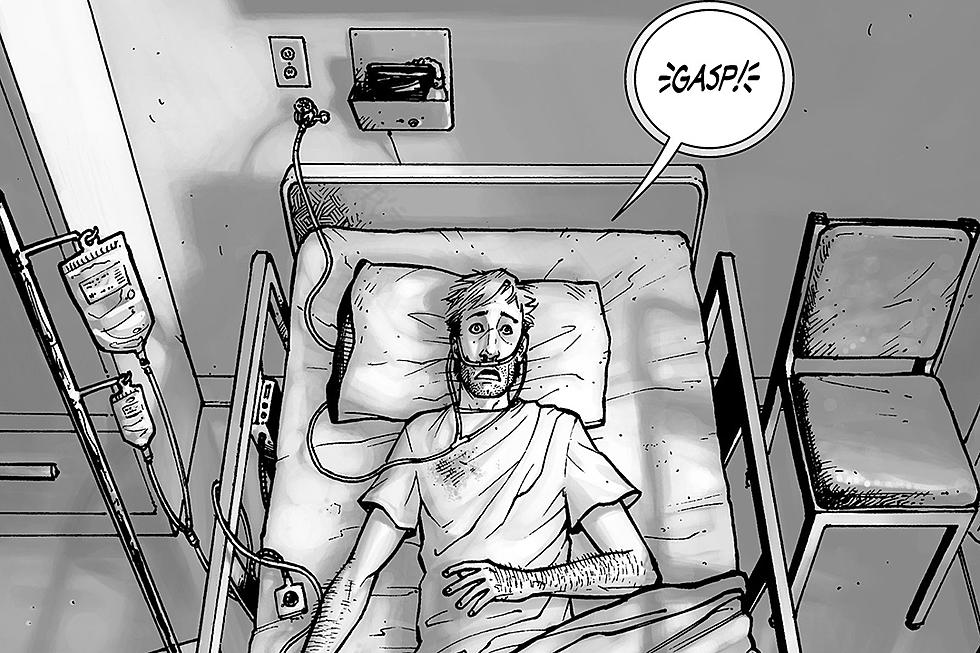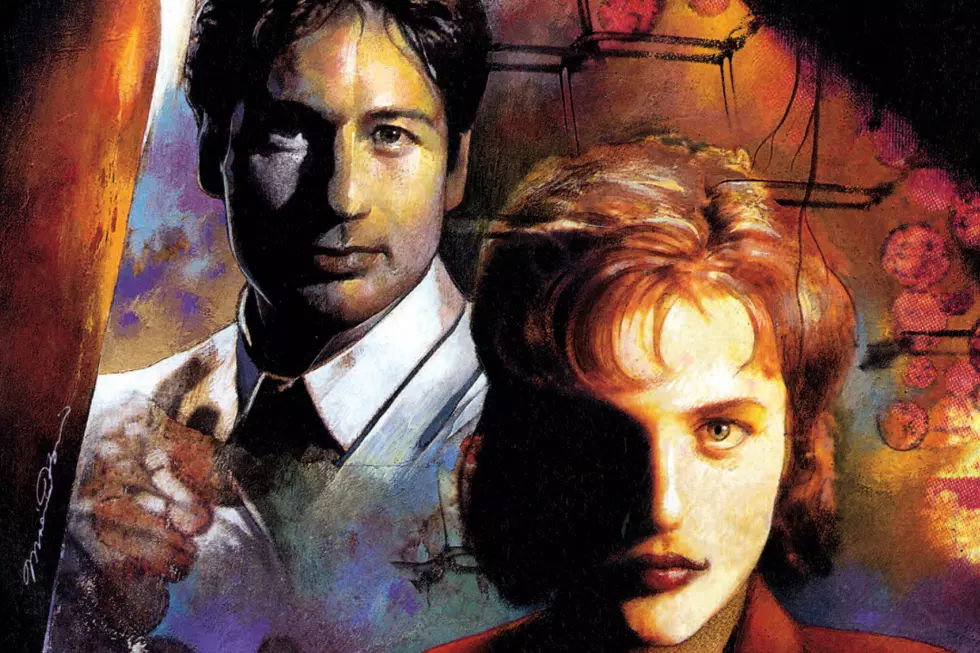
The X-Files Cold Cases #7: ‘Trepanning Opera’
From 1995 to 1998, Topps Comics published a comics tie-in to The X-Files that featured original stories and, among other artists, some of Charlie Adlard‘s earliest US art. With Agents Fox Mulder and Dana Scully about to return to television, we at ComicsAlliance are revisiting this classic series, and highlighting some of the best stories it had to tell.
This week, it's Mulder and Scully versus a serial killer so detached and unreal, only the style of a comic book could bring him to life - or whatever dreamlike state passes for it - and we get hints of a larger metaplot that ties together the entire first year of the X-Files comic.
The X-Files #7: “Trepanning Opera”
Writer: Stefan Petrucha
Artist: Charles Adlard
Cover Art: Miran Kim
Original Publisher: Topps Comics
Current Publisher: IDW Publishing
The X-Files Created by Chris Carter
Last week featured a serial killer that took from the body, so it seems fitting that this week features a serial killer that operates on the mind.
In “Trepanning Opera,” Mulder and Scully pursue a more mundane (or seemingly mundane) case, with a serial killer who kills via trepanation; literally, a hole in the head, an ancient surgical technique meant to let out evil spirits, relieve pressure, and clean out debris embedded in the skull. It actually still sees use today – mostly on fingernails and toenails, to relieve the pain and pressure of blood welling up from a rupture beneath a nail. For the most part, however, the average person needs trepanation like they need a hole in the head.
Look: I had to make that joke.
What makes this an X-File is that the killer believes that they are somehow unstuck in time, and seems able to prove it. The killer claims that all the world is something they dreamed up and that anyone they kill is being released from the dream, and sends letters describing future murders that are decoded with certain key phrases – one of which comes true, leaving the team scrambling to decode the rest of the letters any way they can.
Adlard is far less gory in this story than he was in last week’s Donor, drawing the victims with minimal blood in most cases and with a quiet smile that manages to outdo any one of the piles of bodies the Joker has accumulated over years of comics in terms of being disturbing. To be happy in death should be a good thing, but to be made happy during your murder is terrifying. Petrucha delivers an equally unsettling script, spending plenty of time behind the eyes of the killer as they walk the world with utter certainty about how it works – which is ironic, given how they came to that conclusion.
The killer says that all of it stemmed from a near-death experience and the existential question of whether this entire world was real, or a hallucination born from a dying mind. The certainty deriving from an unanswerable question is not too far from the more unhinged conspiracy theorist, absolutely certain of what’s lurking in the shadows they can’t quite see into. Everything that’s scary about the killer relies on that certainty that is as alien as any grey-skinned, almond-eyed extra-terrestrial the series ever gave us.
I can’t help but note the metatext to it, also, and how, in one sense, the killer is right. All of this is dreamed up by someone, just that it’s not the killer, it’s the creators of the comic. It’s a fictional story, and more, it’s a fictional story that is somehow even more fictional than other X-Files stories, it being a tie-in that the main TV series is under no obligation to acknowledge. This story therefore works better with the level of remove that an artist, rather than actors and director and set designers, brings to it. The less real it feels, the less sure we are that Mulder and Scully know what’s going on. And the only thing more X-Files than that is arguments about faith versus skepticism and poetry about The Red Speedo.
In theory, this being a tie-in means that the comic could go anywhere and do anything, leaving the main TV series where the mythology and the money is untouched. In practice, tie-ins are confining, always the tail wagged by the larger series’ dog. The X-Files is better than most – which is why I’ve spent seven parts of a nine part series dissecting it – but there’s still only so far it can go. It’s in confinement that is fundamentally unreal, just as the killer claims his victims are. It ends on a note that may render everything else in the X-Files canon just as unreal as this story is – if there’s any way for a story to be less real than it already is.
So Trepanning Opera is a strong, unsettling one-shot story that uses the medium well and presents us with a character disturbing in his full certainty that his is the only perspective on right and wrong that matters. But interestingly, it’s not just a one-shot. What starts to rear its head in this comic is a metaplot of sorts, running through the entire first year of the series, including Firebird from a few weeks back. The serial killer is part of something larger than himself, which he confesses in part once his identity is revealed.
The culmination of this arc is something that I’ll go into in next week’s installment, the second-to-last of this series.
More From ComicsAlliance

![Rogues’ Gallery: Who Is The Ultimate ‘Walking Dead’ Villain? [Poll]](http://townsquare.media/site/622/files/2017/01/TWD-Vote.jpg?w=980&q=75)







